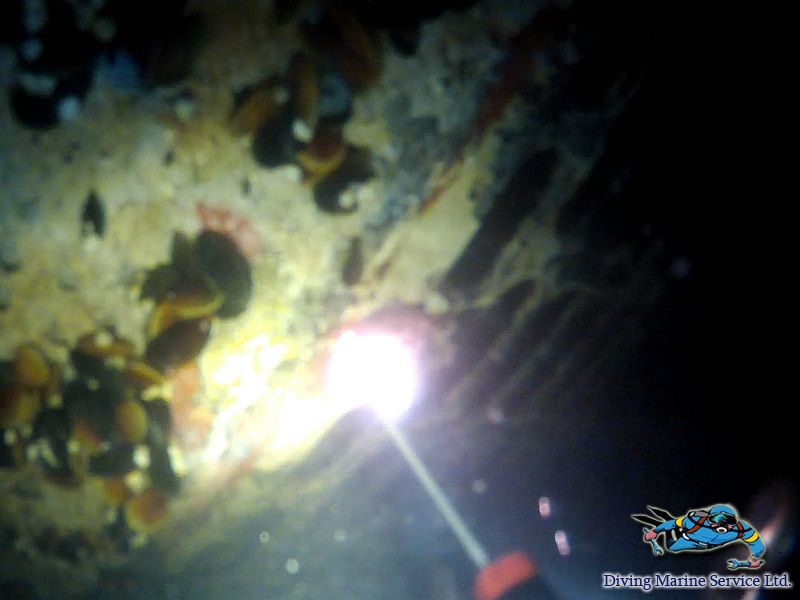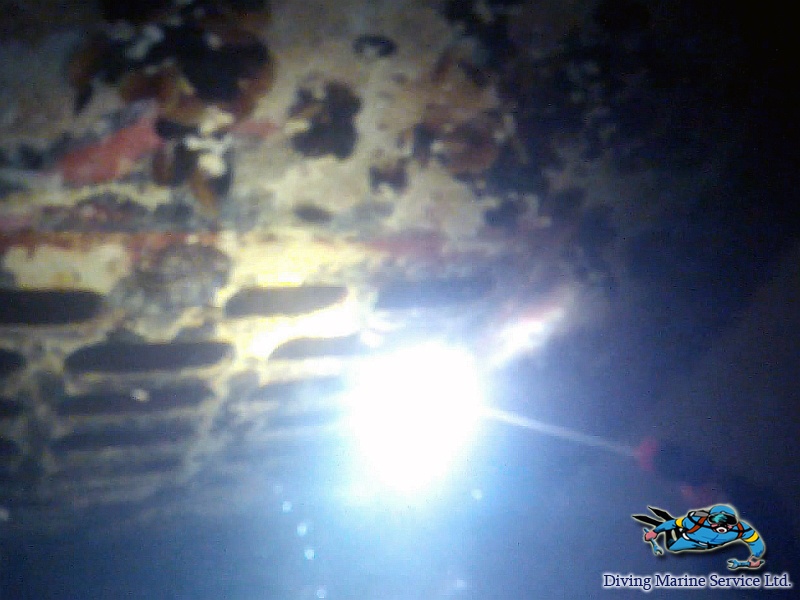Underwater welding and cutting
The up-to-date marine industry involves the construction and service of hundreds of thousands of ships. Sometimes the water element is ruthless to its “guests”, the underwater part of any ship is most often exposed to the damaging effects.

As a result – damages of the ship’s hull underwater part, corrosion, buoyancy loss and other problems which require the solution. Ship repairing is an integral part of the life of any ship, it may be scheduled or urgent one. If the damages do not require the scheduled docking or the problem should be solved urgently, the underwater works, that is the underwater repair , are used. The underwater repair makes it possible to carry out the emergency works in a short time without necessity of docking. The list of underwater works includes the underwater welding and cutting.
The up-to-date underwater welding is performed more often by means of the following methods:
- Welding in the dry environment, – in a dry deep chamber when quality of the welded seams are absolutely identical with the welded seams made ashore. But this is a labour-intensive process which requires two floating cranes and additional ships.
- The dry deep welding, hydro-welding, – when the works are carried out in consistently dry gas environment, that is in special portable boxes. The similar semi-automatic underwater welding is made by an electrode wire. This method requires a tight fit to that place where the actual welding will be, that is tightness. Special mixture of the inert gases is also necessary to displace the water from the chamber or box and to maintain a dry environment in them. An electrode wire which melts is moved with a specified speed to the welding head by means of the flexible hose. Such the underwater welding is monitored by means of the special control panel which is arranged above the water and it also has all necessary control and monitoring instruments. The dry deep welding is controlled and adjusted by means of the similar device.

The wet welding, which is carried out as any other welding by different methods depending on the conditions, it is conditionally divided into the manual arc welding and semi-automatic welding. The process of wet welding is based on the fact that the arc can stably burn in a gas bubble subject to the strong intensive cooling by water. Actually the gas bubble is obtained by evaporation of water, steam and gases of metal which melts. The water in the welding arc decomposes into oxygen and free hydrogen,the oxygen, in its turn, reacts with the metal forming the oxides.
The underwater cutting is also subdivided into the following methods:
- Electro-oxygen cuttin which is very cost-effective at the depth up to hundred meters. The metal, which is subjected to cutting, is heated to the fusing temperature by means of an electric arc; jet of oxygen, burning the metal part and blowing the oxides, is supplied via the electrode. The underwater cutting of such type is mainly used for cutting of black metals, it also requires stable and qualitative electric contact with the metal surface. The underwater cutting performed by such method has a long history and it was used for the first time in 1915.
- The exothermic cutting, like the electro-oxygen cutting, is based on the burning of the special electrode in the stream of oxygen which is supplied through the electrode itself. In this case the electrode burns independently but the electric arc is necessary only for initiating of burning. This technology is perhaps the most widely-spread method of the underwater cutting. The very high temperature of burning of the exothermic electrode makes it possible to cut not only a black metal but also concrete including the reinforced concrete structures.
The underwater cutting by means of the hydraulic systems is a cutting based on using of the powerful energy created by the liquid flow. The hydraulic oil is used for creation of the flow under high pressure and it is delivered by a flexible hose in the hydraulic pump station (hydraulic compressor ). The underwater cutting by such method has high efficiency at a reasonable cost. The hydraulic systems and tools are very reliable, compact, resistant to low temperatures and enough simple in operation.
Today the underwater welding and underwater cutting are very much in demand as they are greatly reliable and effective methods of the ship’s repair without docking.
Latest news
- Maintenance of fish protection structures 09.05.2020
- Underwater inspection of port and offshore facilities 02.05.2020
- Hull cleaning using Brush-Kart system 18.04.2020
